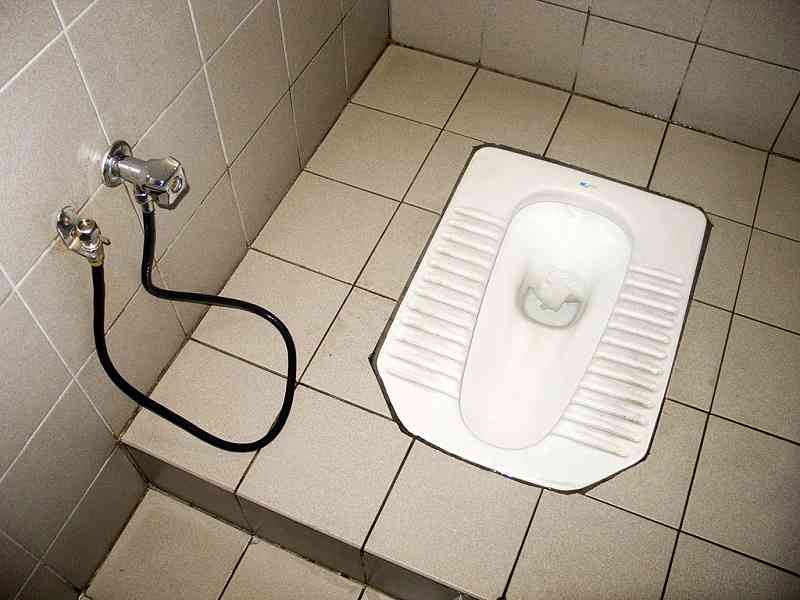Why Doing the ‘Asian Squat’ on the Toilet is the Best Way to Poop



By Ryan General
March 19, 2018
For many in Asia, doing the “number two” involves sitting in a position the Western world is not quite used to.
While sitting on toilets have become quite common in Asian households these days, the squatting is still the preferred way of defecating in many homes and public toilets in the region.
Many countries in Asia such as Japan, Indonesia, India, Bangladesh, Pakistan, China, North Korea, South Korea, Singapore, Sri Lanka, Thailand, Malaysia, Myanmar, and Iran have held on to using squat toilets long after sitting toilets became widely used in Western countries the 1800s. Today, many know it as the “Asian squat.”
Interestingly, the time-honored pooping posture has recently gained widespread attention, with new studies highlighting its benefits over sitting, which have generally been perceived to be the “more modern” way.
Ease to fece
In a study conducted by Israeli researcher Dov Sikirov, it was shown that defecation is a lot easier squatting than when seated. The study involved 28 participants who were asked to sit on toilets of different heights (42cm and 32cm high) including a plastic container where they were told to squat.
They then recorded how long their bowel motions took and how difficult their efforts were for six consecutive bowel motions per posture. Findings showed that the average time for passing a bowel motion during squatting was 51 seconds, compared to the average times for the lower and higher toilet seats: 114 and 130 seconds respectively.
Further studies also hypothesized the link between sitting on toilets to a range of complications from heart attacks to hernia and colon cancer.

Safer, Comfy bowels
A Japanese team did another research which proved that squatting is a lot safer and more comfortable than sitting. In the study, six volunteers reportedly had their rectums filled with a contrast solution and then instructed to release the fluid from each pooping position.
A Japanese team did another research which proved that squatting is a lot safer and more comfortable than sitting. In the study, six volunteers reportedly had their rectums filled with a contrast solution and then instructed to release the fluid from each pooping position.
Researchers found that the squatting position allowed for greater widening in the anorectal angle, which resulted in less abdominal straining for the participants. Developing tears of the anal lining, or fissures, can be the result of straining excessively.
Findings from a separate study in Pakistan even revealed that those who squat have significantly reduced symptoms of chronic anal fissures than those who sat.
Symptoms of the condition included painful defecation and blood secretion from the rectum. After adopting a squatting posture on a modified toilet seat – with their hips flexed and feet resting on an elevated stool (mimicking a squatting position), sufferers of the chronic anal fissures soon improved their condition.
Other benefits
It is also a popular belief that squatting during defecation is an ideal position for pregnant women, as it avoids pressure on the uterus when using the toilet. Daily squatting is even advised to help prepare the expectant mother for a more natural delivery.
There are those who also feel that squat pans are more hygienic compared to sitting toilets since using it involves no skin contact with the surface of the toilet seat, which makes it a more ideal to use, especially in public places.
Is the West Finally catching on?
Interestingly, while urban areas in many Asian countries are gravitating more towards the use of sitting toilets, the West is slowly appreciating the benefits of squat toilets.
Companies like Squatty Potty have been trying to make squatting toilets a fad in the United States by introducing products such as footstools to mimic the position.

“The modern toilet has been sold to us as civilized, but the straining that sitting causes is not healthy,” Squatty Potty’s Robert Edwards told NPR’s “Shots” blog, asserting that their product can “end hemorrhoids, prevent colon disease, improve pelvic floor issues, and offer numerous other benefits.”
David Ling, inventor of the Sandun-Evaco toilet converter, even goes as far as promising users “a lifetime of health benefits (better skin, flatter abdomen, reduced toxicity, better mental clarity and reduced risk of disease as a result of a cleaner and healthier colon).”
Share this Article
Share this Article